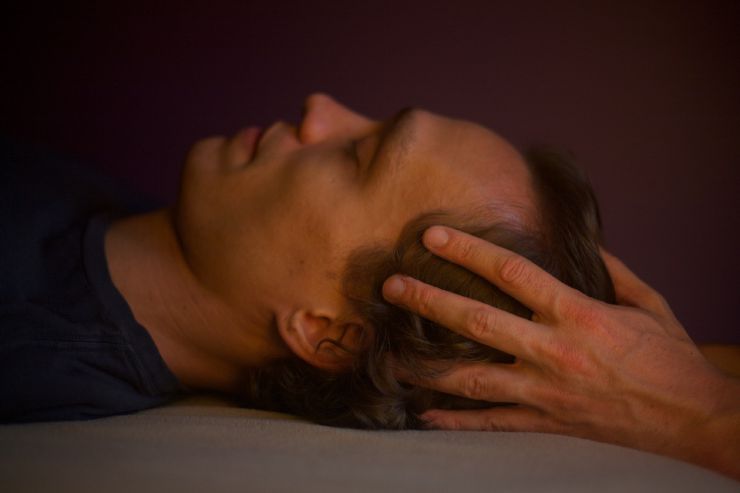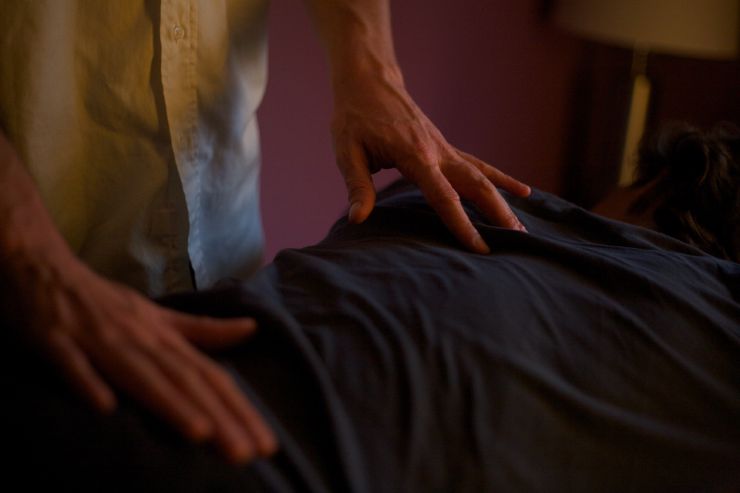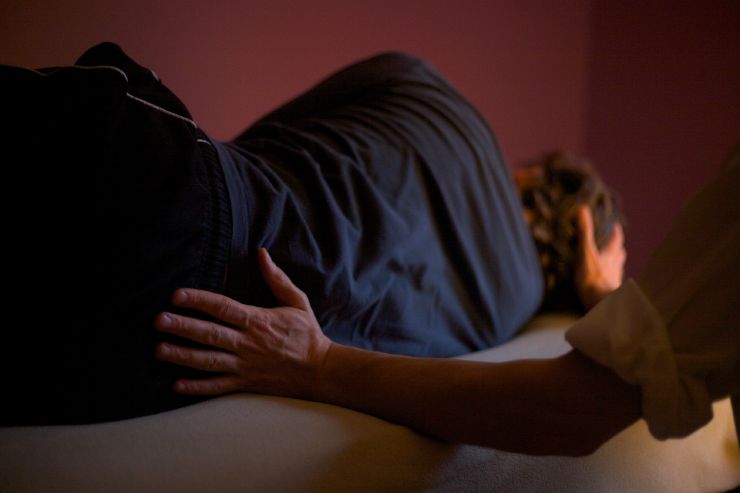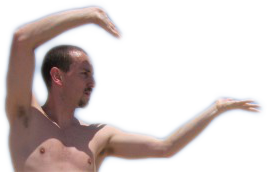Craniosacral Therapy
What is Craniosacral Therapy?
Craniosacral Work is a subtle hands on approach with many effects on the human being as a whole.
It can:
- aid the resolution of physical dysfunction
- increase the speed of recovery
- bring a feeling of overall wellness
- aid deep healing on emotional and psychological levels
- facilitate deep relaxation
- open us up to layers of ourselves that remain covered in normal states of awareness.

It addresses both the energetic and structural aspects of the client and because the approach is non-allopathic (not using drugs to go against the disease process), Craniosacral Therapy falls within the realm of alternative or energy medicine.
The Craniosacral system includes the brain, the cerebrospinal fluid, the system of membranes inside the cranium, all 22 cranial bones, the spine and the sacrum. This very pivotal system affects all fluids, tissues, bones, energetics and bio-electricity of the body.

Where does it originate from?
Instinctual and intuitive hands-on healing has been used since the dawn of time and served mankind from the first years of our evolution. With the dawn of modern science, great advances were made in understanding the human body and the nature of disease, enabling specific problems to be identified and addressed with drugs and surgery. The future of healthcare and wellness requires the marriage of the ancient with the modern.
The Craniosacral Therapy approach to healing derives its origins from Osteopathy and Cranial Osteopathy and is a light touch, non-invasive healing modality developed by frontier doctors in the early years of the United States.
The classical osteopaths used their perception and their knowledge of the systems of the body to identify dysfunctions using their hands. They used their perceptive skills to gain access to a subtle rhythm they called “the breath of life” to aid healing in their patients. This silent force, which can be thought of as a field of energy or chi, blows through the Craniosacral system, animates it, and infuses it with information and intelligence.
The ability to listen to and facilitate these forces are the basis of a Craniosacral training and the practitioner develops skills in stillness and deep listening.
In more recent times, the physiological effects of these forces have now been understood to be a combination of: the movement of bones, associated connective tissue changes along with fluid and bio-electrical shifts. The goal of the therapy is therefore to aid the body in balancing this myriad of complexity.
Western Science is beginning to understand that the brain, memory and emotions exist beyond the head, given that events happen to the whole person, and therefore the cellular body acts as a warehouse of memories. These can release, change and return to equilibrium, given the right conditions.

What Types of Health Issues can it address?
Factors that compromise posture and function throughout the body are addressed with equal emphasis to those that appear in the cranium. There is, however, a focus around the effect on the head and the spinal column because of its central role in the body. Because it acts on the deepest structures and organs of the nervous system, Craniosacral Therapy influences motor, pain and coordination mechanisms, the digestive system, the respiratory system, heart function and the endocrine system.
Craniosacral Therapy enhances the body’s natural healing processes, and has been effective over a wide spectrum of medical problems associated with pain and dysfunction, including:
- Migraine headaches
- Traumatic brain and spinal cord injuries
- Chronic neck and back pain
- Emotional difficulties
- Motor co-ordination difficulties
- Stress and tension-related problems
- Central nervous system disorders
- Temperal-mandibular joint syndrome (TMJ)
- Orthopaedic problems
- Chronic fatigue and issues around low energy
- Neurovascular or immune disorders
- Scoliosis
- Infantile disorders
- Post-traumatic stress disorder
- Autism
- Learning disabilities
- Fibromyalgia and other connective tissue disorders
- Recovery from accidents, surgery, and acute conditions
- Resolution of traumas and depression
Aside from the physical aspects of being, it can also be used as a tool for deep relaxation & meditation, to heal old injuries or emotional wounds, uncover resilience and inner vitality, access parts of ourselves outside the conscious realm and augment other approaches to self-development.This enables people to find finer levels of balance.
How is Craniosacral Therapy Performed?
1 to 1 sessions in Craniosacral Therapy take place over approximately 1 hour. The client remains fully clothed throughout and light touch is used to identify imbalances within the deep rhythms of the body. The Craniosacral practitioner palpates (observes by placing hands on) the clients body in various places, whilst synchronising with the system to encourage the body’s innate healing and balancing forces to take a more active role.
Who might look to receive Craniosacral Therapy?
James’ clients include people from all walks of life. Some in states of ill health and some in good health who wish to use this subtle work to meet their own objectives, be it in their profession or in their personal life.
From Senior International Corporate Executives looking for cutting edge relaxation techniques, to Opera and Choir Singers looking to access more range, from persons looking to heal, athletes looking to return to health after injury or fine tune their performance, to massage therapists and alternative health practitioners looking to restore themselves between sessions.
A series of sessions is recommended to achieve the full benefit as it takes time for the client to integrate the work. It can take a number of sessions for the clients body and nervous system to learn to interact and communicate to the quality of the palpation.
Craniosacral Work can provide benefits no matter your profession, lifestyle or aspirations.
James’ Background in Craniosacral Therapy
Over the last 15 years, James has completed courses with the Upledger Institute (developers of Craniosacral Therapy), the Milne Institute, (Visionary Craniosacral Work) and in Biodynamic Craniosacral work
James is a certified Biodynamic Craniosacral teacher with the Biodynamic Craniosacral Therapy Association of North America, (BCTA-NA). He is a primary teacher with the Wellness Institute, based in Colorado, teaching classes globally.
He completed a teacher training program with Roger Gilchrist (Wellness Institute), along with an Advanced training (Neuro Energetic Therapy - NET).
James is an R-CST (Registered - Craniosacral Therapist) and is NCBTMB (National Certification Board for Therapeutic Massage and BodyWork) certified and registered as a Body Worker.

